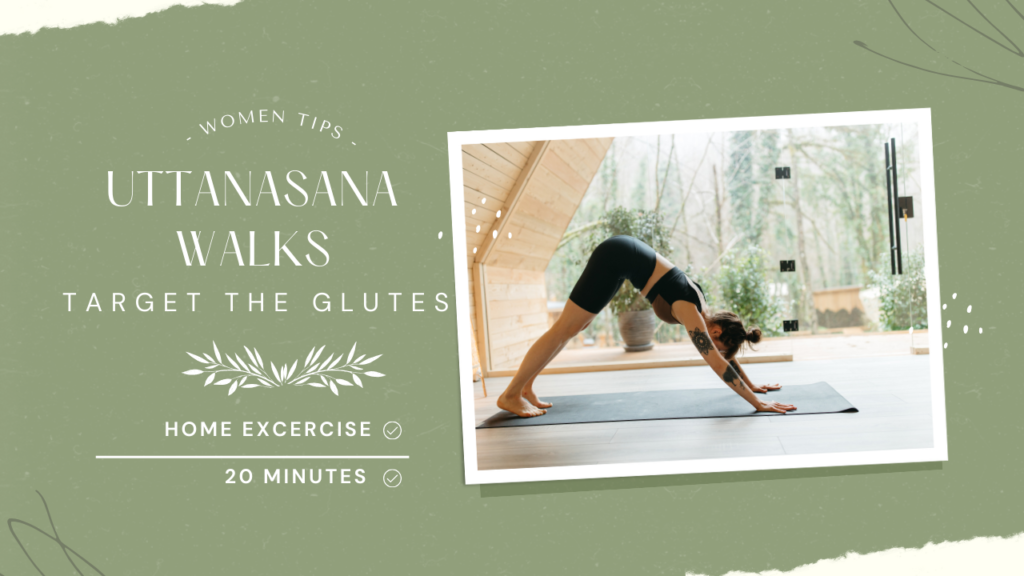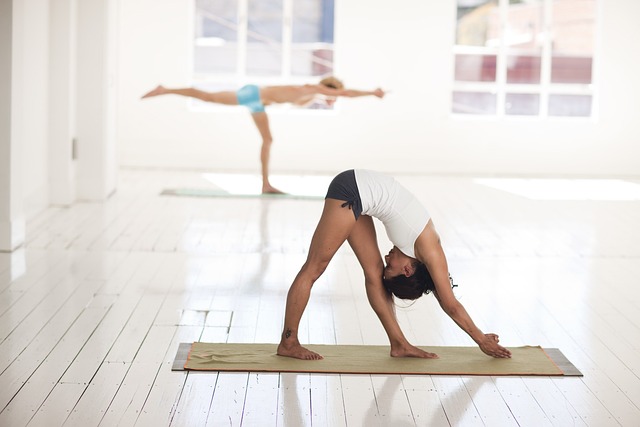
Introduction: Explaining the benefits of Uttanasana walks for glutes.
Uttanasana walks, also known as standing forward bend walks, are a dynamic yoga exercise that involves walking while in a forward bend position. This exercise primarily targets the glutes, or the muscles in the buttocks (the pigeon pose is also a deep hip opener can help to release tension and tightness in the muscles of the buttocks) and offers a multitude of benefits for strengthening and toning this muscle group. By engaging in Uttanasana walks, individuals can improve their glute strength, which is essential for maintaining proper posture, stability, and overall lower body function. Strong glutes not only enhance physical performance in activities like running and weightlifting but also help prevent injuries by supporting the pelvis and spine. The glutes also play a critical role in achieving and maintaining front splits by providing support and stability to the hips and pelvis.
In addition to strengthening the glutes, Uttanasana walks can also improve flexibility in the hamstrings and lower back, which play a significant role in glute activation and overall lower body mobility. By moving through a dynamic range of motion in a standing forward bend position, individuals can stretch and lengthen the muscles in the back of the legs and lower back, making it easier to engage the glutes during exercises and daily activities.
Furthermore, Uttanasana walks can help increase blood flow and circulation to the glutes, promoting muscle recovery and reducing soreness after intense workouts. Overall, incorporating Uttanasana walks into a regular exercise routine can provide numerous benefits for both the physical and physiological well-being of the glutes.
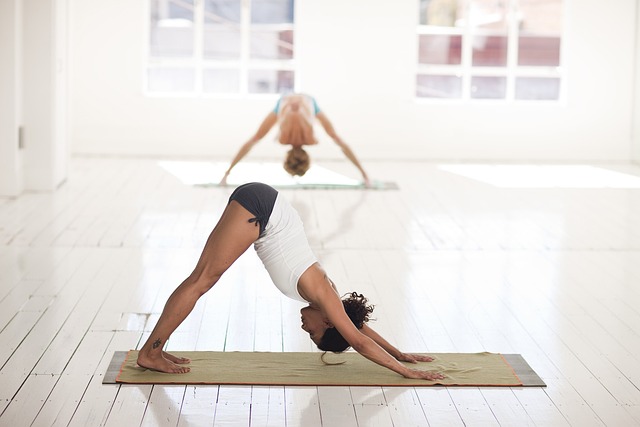
What is Uttanasana? Brief overview of the yoga pose.
Uttanasana, also known as the Standing Forward Bend Pose, is a foundational yoga pose that is commonly practiced in various yoga styles. In Uttanasana, the practitioner stands in a forward fold position, with the upper body hinging at the hips and reaching towards the floor. This pose is often used as a warm-up or cool-down posture in yoga sequences, as it stretches the hamstrings, calves, and spine while also calming the mind and relieving stress. Uttanasana is believed to bring a sense of grounding and release to the body, helping to improve flexibility and reduce tension in the lower back and hips. (By also focusing on activating the glutes in the tree pose, practitioners can improve their balance, build strength in the lower body, and enhance the mind-body connection.)
When practicing Uttanasana, it is important to maintain proper alignment by keeping the spine long, engaging the core muscles, and relaxing the head and neck. Modifications can be made by bending the knees slightly if there is tightness in the hamstrings or using a block to support the hands if reaching the floor is challenging. Incorporating Uttanasana into a yoga practice can help increase flexibility in the legs and back, improve posture, and promote a sense of relaxation and rejuvenation.
As with any yoga pose, it is essential to listen to the body and work within one’s own limits to prevent injury and experience the full benefits of the practice. (Strengthening and stretching the glutes can improve flexibility and stability, helping to prevent injuries during middle splits practice).
Activation of glute muscles during Uttanasana walks.
Activation of the glute muscles during Uttanasana walks is a crucial component of this exercise as it helps to strengthen and stabilize the hips and lower back. This movement involves leaning forward from the hips with the legs straight, engaging the muscles in the hamstrings, glutes, and lower back. By focusing on activating the glute muscles during these walks, individuals can improve their posture, balance, and overall strength.
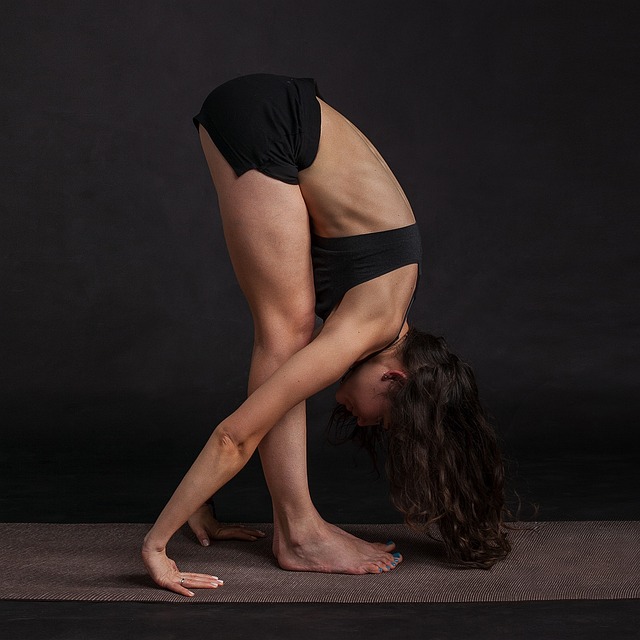
Furthermore, incorporating this activation technique can help prevent injury and enhance the effectiveness of the exercise by targeting the specific muscle groups needed for optimal performance. By consistently practicing Uttanasana walks with mindfulness and intention towards engaging the glute muscles, individuals can experience improved stability, endurance, and strength in their lower body.
Improving balance and stability with this exercise.
Uttanasana walks are a highly effective practice in improving balance and stability in the body. This simple yet powerful exercise involves standing tall in Uttanasana (Standing Forward Fold) pose and taking small steps forward and backward, maintaining the pose throughout the movement. This challenges the core muscles, enhances proprioception, and improves coordination, ultimately leading to increased stability and balance.
By incorporating Uttanasana walks into a regular yoga or fitness routine, individuals can strengthen weak muscles, improve posture, and reduce the risk of falls or injuries. Furthermore, this practice can be easily modified to fit individual needs and can be scaled up in intensity as strength and stability increase over time. Overall, Uttanasana walks are a valuable tool in enhancing physical well-being and should be considered an essential component of any balanced fitness routine.
Strengthening the lower back and hamstrings.
Uttanasana walks are a highly effective exercise for strengthening the lower back and hamstrings. By incorporating this exercise into a regular workout routine, individuals can improve their posture, stability, and overall lower body strength. The controlled movement and lengthening of the spine in uttanasana walks can also help to improve flexibility and prevent injuries in the lower back and hamstrings. Additionally, this exercise can be easily modified to suit different fitness levels and can be a valuable addition to any strength training program.
Enhancing flexibility in the hips and legs.
By regularly practicing Uttanasana walks, individuals can improve their overall flexibility, which can have a positive impact on their performance in various physical activities and reduce the risk of injury. Additionally, this exercise can also help to improve posture and alignment by stretching and strengthening the muscles in the lower body. Overall, incorporating Uttanasana walks into a regular exercise routine can be an effective way to promote overall physical health and well-being.
Incorporating Uttanasana walks into your workout routine.
Practicing this pose can help relieve stress and calm the mind, making it an excellent addition to any mindfulness practice. Overall, incorporating Uttanasana walks into a workout routine can enhance overall physical and mental well-being, making it a valuable addition to a comprehensive fitness regimen. Additionally, by incorporating Uttanasana walks into a workout routine, individuals can improve their flexibility, balance, and posture.
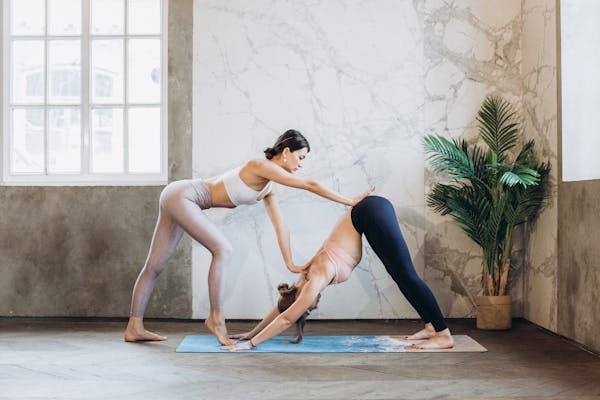
Tips for proper form and technique during the exercise.
Uttanasana walks, or walking in a forward bend position, can provide a challenging yet effective way to improve flexibility and strengthen the muscles in the legs, back, and core. To ensure proper form and technique during these walks, it is essential to start with a strong foundation by aligning the feet hip-width apart and engaging the core muscles. As the individual bends forward from the hips, it is important to keep the spine long and straight, avoiding rounding of the back.
Additionally, maintaining a slight bend in the knees can help prevent strain on the hamstrings and lower back. To enhance the stretch and deepen the pose, gently sway from side to side as you walk forward, focusing on breathing deeply and evenly throughout the movement. By following these tips for proper form and technique, individuals can safely and effectively incorporate Uttanasana walks into their yoga practice to promote overall strength, flexibility, and balance.
Potential modifications for beginners or those with injuries.
For beginners who may struggle with tight hamstrings or limited flexibility, there are several modifications that can help make this pose more accessible. One option is to practice with a bend in the knees, which can reduce strain on the lower back and allow for a deeper stretch in the hamstrings. Another modification is to use a block or chair for support, placing the hands on an elevated surface to make it easier to maintain proper alignment and gradually work towards a full expression of the pose.
Practicing with a wider stance or with the feet slightly turned out can help beginners find more stability and balance in the posture. By incorporating these modifications, beginners can gradually build strength and flexibility in the body while safely exploring the benefits of Uttanasana walks.
Conclusion: Recap of benefits and importance of adding this exercise.
In conclusion, the Uttanasana walk is a highly beneficial exercise that should not be overlooked in one’s fitness regimen. This simple yet effective movement helps to stretch the hamstrings, calves, and lower back, improve circulation, and relieve tension in the body. By incorporating Uttanasana walks into a regular routine, individuals can experience increased flexibility, reduced risk of injury, and enhanced overall well-being.
This exercise can be easily modified to suit different fitness levels and can be done practically anywhere, making it a convenient and accessible option for those looking to improve their physical health. In light of these benefits, it is clear that the Uttanasana walk is a valuable addition to any exercise program and should be appreciated for its role in promoting holistic wellness.
Bibliography
S, G., A, K., Babu, P.S., Srinivasan, V., Vishnuram, S., K, P. and Alagesan, J. (2024). Effectiveness of Mindfulness Yoga and Progressive Resistance Exercises on Anxiety and Depression among Parkinson’s Disease. | Indian Journal of Physiotherapy & Occupational Therapy | EBSCOhost. [online] openurl.ebsco.com. Available at: https://openurl.ebsco.com/openurl?sid=ebsco:plink:scholar&id=ebsco:gcd:175422166&crl=c [Accessed 4 Jun. 2024].
Abel, A.N., Lloyd, L.K. and Williams, J.S. (2013). The effects of regular yoga practice on pulmonary function in healthy individuals: a literature review. Journal of Alternative and Complementary Medicine (New York, N.Y.), [online] 19(3), pp.185–190. doi:https://doi.org/10.1089/acm.2011.0516.
Hipparagi, M., Assistant, T., Gangadhar, P., Professor, A. and Nadgir, S. (2019). Suryanamaskar for human wellness. ~ 81 ~ International Journal of Physical Education, Sports and Health, [online] 6(4). Available at: https://www.kheljournal.com/archives/2019/vol6issue4/PartB/6-4-7-230.pdf [Accessed 4 Jun. 2024].


